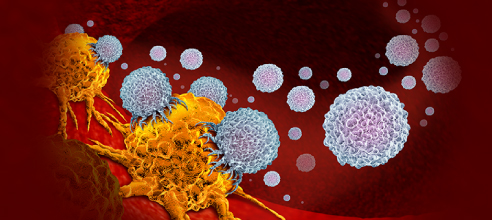Available High Throughput Screening Technologies for Ion Channels
Ion channels are involved in a variety of fundamental physiological processes, and their malfunction leads to a variety of human diseases. Thus, ion channels represent an attractive class of drug targets and an important class of off-target sites for in vitro pharmacological assays. Rapid advances in functional assays and instrument development over the past few decades have enabled high-throughput screening (HTS) activities to be performed on an ever-expanding list of channel types. Chronologically, HTS approaches for ion channels include ligand-binding assays, flux-based assays, fluorescence-based assays, and automated electrophysiological assays.
In the past, HTS methods for ion channels have been extensively developed and applied to most ion channels. Chronologically, these methods include: ligand-binding assays, throughput-based assays, fluorescence-based assays, and automated electrophysiological assays. Ligand binding assays have been widely used to screen for ion channel modulators. However, these assays are not considered functional assays because they measure the binding affinity of the compound to the ion channel rather than the ability to alter channel function. Ligand binding assays require prior knowledge of target binding sites and the formation of radiolabeled ligands specific for these binding sites.
Ion flux assays have been successfully applied to directly access functional changes in ion channel activity. Radioisotopes have been used to track the influx or efflux of specific ions into or out of cells, for the study of Na+, Ca2+, and K+ channels, respectively. A commonly used assay format is 86 Rb+ efflux from K+ channels or non-selective cation channels. Fluorescence-based methods do not directly measure ionic currents. Instead, they measure membrane potential-dependent or ion concentration-dependent changes in the fluorescent signal caused by ion flux. Because fluorescence-based methods yield robust and uniform measurements of cell populations, these assays are similar to those for other protein classes. As a result, greater instrument selection and expertise are available. Therefore, these assays are relatively easy to implement and optimize for higher throughput.
Patch clamp is widely regarded as the gold standard for direct recording of ion channel activity. This technique provides high-quality and physiologically relevant ion channel function data at the single-cell or single-channel (within a small patch of membrane) level. For pharmacological testing of compounds, it provides a standard for measuring the potency of compound-channel interactions.
Before choosing the ideal screening method, it is important to determine what to look for when comparing techniques and their applications. Eight parameters commonly considered include sensitivity, specificity, throughput, temporal resolution, robustness, flexibility, cost, and physiological relevance. Of all the analytical formats for ion channels, automated patch-clamp analysis is without a doubt the best option for providing high-quality data and allowing for higher throughput. Currently, automated electrophysiology testing remains expensive. Therefore, not every lab can afford it. Therefore, as a compromise, the combination of fluorescence-based screening techniques and automated patch clamping has become the most commonly used approach in ion channel-targeted drug discovery.
As costs decrease and technology improves, automated electrophysiology will become the dominant form of assay for most ion channel subtypes. For different ion channel subclasses, high-throughput screening methods vary due to considerations of ion selectivity, channel activation kinetics, and the need for ligands. There are 3 phases for selected ion channel targets: fluorescence-based assays for primary screening, automated patch-clamp validation for secondary screening, and manual patch characterization for tertiary screening. Since there are many ion channel families and subclasses available, the most common screening methods based on ion selectivity or permeability will be discussed.
Advances and improvements in ion channel HTS technology have accelerated ion channel drug discovery. Detection of ion flux signals can be achieved using fluorescent indicator dyes and a fluorescent plate reader, such as a fluorescence imaging plate reader (FLIPR Tetra ), Molecular Devices) or FDSS (Hamamatsu Photonics). These assays have relatively low temporal resolution and information content, but are robust and low-cost.
Electrophysiological methods have the most direct methods to measure ion channel activity and also allow flexibility for assay optimization for each channel type. The combination of non-electrophysiological and electrophysiological HTS methods provides an integrated and cost-effective approach to ion channel drug discovery and ensures high-quality data generation.
- Like
- Reply
-
Share
About Us · User Accounts and Benefits · Privacy Policy · Management Center · FAQs
© 2025 MolecularCloud



